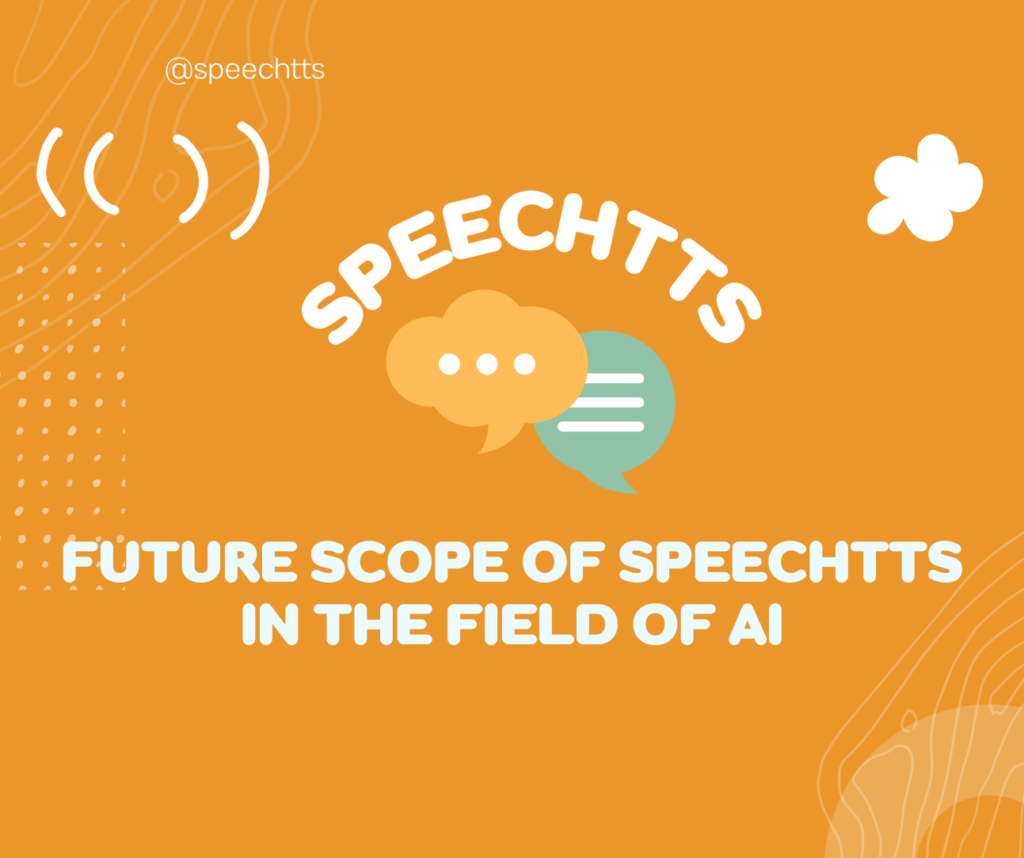Blog
Future scope of SpeechTTS in the field of AI

Future scope of SpeechTTS in the field of AI
Admin / June 4, 2023
In recent years, artificial intelligence (AI) has taken the world by storm. It has revolutionized the way we think, work, and live. One of the most exciting aspects of AI is speech-to-text synthesis, which allows computers to mimic human speech patterns. SpeechTTS has already made significant contributions to applications like voice assistants, automated customer service, and language translation. But what does the future hold for SpeechTTS in the field of AI? In this blog post, we explore the future scope of SpeechTTS and how it will impact our lives.
Future scope of SpeechTTS in the field of AI
Text-to-speech (TTS) technology has been around for a long time. Traditional TTS systems used rule-based approaches and required manual work to ensure that the synthesised voice was understandable and clear. Recently, the rapid development of artificial intelligence (AI) has enabled modern speech TTS (SpeechTTS) models to learn from vast amounts of data to produce highly realistic and personalised voices. It is exciting to note that the future scope of SpeechTTS is significantly wide in the field of AI.
Improvement in Naturalness and Intelligibility
Modern SpeechTTS models are capable of producing highly natural-sounding and intelligible speech. With advancements in AI, SpeechTTS will produce even more natural intonation, subtle timbre variation and dynamic inflection in a speaker's voice. As a result, it has become feasible to provide a human-like conversational experience with AI-generated voices. Therefore, it is expected that in future, products with SpeechTTS will offer natural sounding voices that can be personalised, increasing their utility in various fields, including education, entertainment, and automation.
Expanding Multilingual Support
SpeechTTS has no regional, lingual or accent barriers, unlike human voice actors. With advancements in AI, it’s expected that SpeechTTS will achieve a similar level of multilingual support that humans have. Thus, users will have a plethora of language options, and businesses will be able to localise products accordingly. This ensures more efficient and broader communication with users all over the globe.
Personalisation for the Masses
SpeechTTS models can learn from vast amounts of data, resulting in voices that are highly personalised to match a user's preferences. In the future, the personalisation will go deeper than pitch and speech rate. Using AI, it's possible to generate highly personalised voices that mimic the speaker's tone, rate, and intonation, among other vocal features. This feature will allow businesses to create highly personalised and customised communication with their customers with ease.
Applications in Healthcare
SpeechTTS technology has influenced the healthcare field significantly. AI-powered SpeechTTS has become an essential component of assistive communication for several physically disabled people, including those with hearing and speech impairments. In the future, SpeechTTS models will continue to evolve, and their application in healthcare will increase. AI-powered SpeechTTS will help to treat various speech impairments, including stuttering and lisps, thereby improving the quality of life for those suffering from such conditions.
In Conclusion
SpeechTTS technology, with the integration of AI, has become a versatile tool, with vast potential to improve several sectors of our lives. SpeechTTS is set to revolutionise AI by producing more natural-sounding and intelligible speech while providing sufficient flexibility for developers to experiment with different voices to create customised experiences. In the future, SpeechTTS will continue to expand its scope of capabilities, allowing for more personalised and efficient communication, language localisation, and enhancing the quality of life for various people.